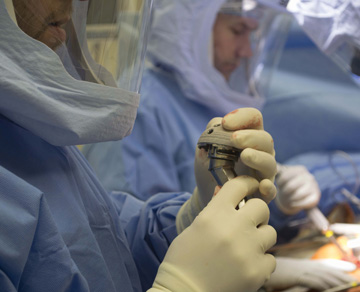“Load up the SUV honey, because we’re moving to Arizona.” That’s how I broke the news to my wife last year when I agreed to become the CEO of a small surgical center in a rural part of northern Arizona. I spent most of my 25-year healthcare administration career in the Oklahoma City metro area working for large health systems while serving on several local and national boards. During that time, I had the opportunity to work with rural outreach programs designed to support community-based organizations and bolster rural medical staff recruitment. There’s no doubt that running an ASC in a small rural community is a unique experience, but the following challenges I faced — as well the best practices I employed — apply to surgical leaders everywhere.
- Home
- The Magazine
- Article
Business Advisor: Lessons Learned From Running a Rural ASC
By: Sam McAdams, FACHE
Published: 11/18/2021
These best practices apply to surgical administrators everywhere.
• Marketing is a must. If you want to increase your caseload, you need to actively promote the benefits of receiving care at your facility. I’ve had a lot of success educating the community on the lower out-of-pocket cost advantages of having surgery done at an ASC as opposed to a hospital. Along those lines, your marketing should find ways to promote positive patient experiences. In small communities, word of mouth is king. Surgeons who are good at what they do and reminded to promote positive patient feedback can have a greater impact on market share than any other marketing strategy. When patients and loved ones have good experiences at your facility, it typically translates to increased business.
• Nimble staffing. Flexing staff to account for the ebbs and flows of your caseload is a necessary part of running a surgery center — particularly a rural one. You can anticipate seasonal volume fluctuation based on historical volume trends. The summer is generally a high-traffic time for pediatric cases and the end of the year is a particularly busy time because many patients have met their annual deductible. During those peak surgery times, we rely on staff overtime and incentivize our team to work longer hours. For instance, we provide a $4/hour differential for anyone who works after 6 p.m. and has exceeded an eight-hour shift.
• Create partnerships. Recruiting surgeons can be a challenge under ideal circumstances, but finding seasoned surgeons with ties to a rural market who want to work as independent providers is especially difficult. Typically, an income guarantee is required. New surgeons coming out of residency want to work with an established partner and more surgeons are looking for hospital employment.
So how can rural ASCs recruit new physicians? Partnering with local hospitals or large health systems in surrounding urban markets is one option. Another successful trend: Staff specialty clinics with mid-level providers who can tee up surgeons with cases that fill a few days per month until volumes increase to a point that justify a full-time practice model. Either way, there are plenty of benefits to forging partnerships with outside organizations that create symbiotic relationships for facilities of all sizes.
• Streamline supplies. Almost all ASCs operate on tight profit margins. In the rural setting this dynamic is often magnified. That means it’s imperative to preemptively negotiate with vendors on reduced pricing for high-cost items such as implants. When it comes to supplying PPE, research different vendors and get the quotes in hand early and often. The pandemic showed us the dangers of relying on the status quo — or a single supplier. There are some true manufacturing shortages right now where reps are limiting product available — the 20 cases of supplies you used to get have been reduced to just two — but you have options. Now is the time to consider working with vendors who will swap savings for new business.
• Add procedures. Early on in my career, I learned that surgical organizations must constantly grow to remain successful. Stay abreast of potential new service-line opportunities as payers approve procedures for the outpatient setting. For instance, Medicare approved reimbursement for outpatient total hip procedures in January 2021. In anticipation of this CMS change, I organized a small ad hoc project team to look at the prospect of adding total hips to our already successful total joint replacement program. Upon review of the cost model and predicted case volume, the new service line data showed a conservative break-even timeline of just eight months. With several preparation meetings and appropriate training plans, the center’s board approved the new service line, and we performed the first successful case in January of this year —just days after CMS published its updated Medicare fee schedule.
Maximizing market share

.svg?sfvrsn=be606e78_3)
.svg?sfvrsn=56b2f850_5)